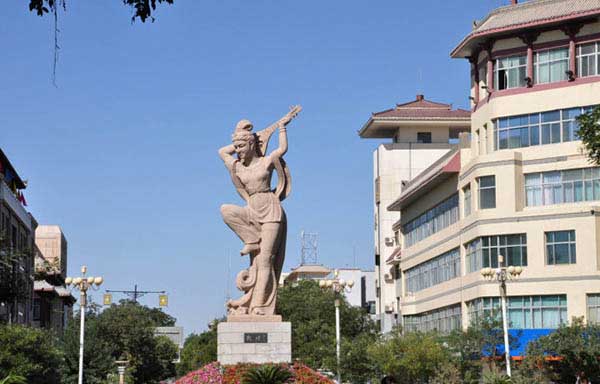- By admin
- In DunhuangArt
- 2017-12-11
Style and Artistry of Dunhuang Art
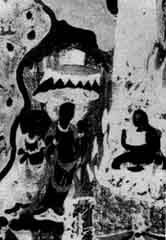 Cave No. 420, Sui DynastyMeanwhile, line drawings too underwent a change. Amidst the fine iron-hard lines there emerged free and swiftly flowing orchid-leaf lines. Ochre-red lines were used not only for the initial sketch but also for finalizing the contours, adding colour to the figures. Colouring evolved from the simple application to a more resplendent effect as the western three-dimensional method blended with the Chinese colouring technique. The tonal effect of the faces appears rosy but with a highlighting of light and shade. Foreign techniques combined with indigenous skills provided the basis for a new style.
Cave No. 420, Sui DynastyMeanwhile, line drawings too underwent a change. Amidst the fine iron-hard lines there emerged free and swiftly flowing orchid-leaf lines. Ochre-red lines were used not only for the initial sketch but also for finalizing the contours, adding colour to the figures. Colouring evolved from the simple application to a more resplendent effect as the western three-dimensional method blended with the Chinese colouring technique. The tonal effect of the faces appears rosy but with a highlighting of light and shade. Foreign techniques combined with indigenous skills provided the basis for a new style.
Most Bodhisattvas of the Sui Dynasty have their right shoulder uncovered, they wear a monk's robe and a silk dhoti wrapped around the waist. The dhoti is woven with a phoenix and floral pattern of Persian origin. Thus a special kind of Bodhisattva characterizes the Sui Dynasty, clearly an effect of the Sui Dynasty's expanding activities along the Silk Road, following the Sui government's hosting of a trade fair with twenty-seven nations as participants at Zhangye, and their vigorous policy of promoting cultural exchanges between China and the West.
The second stream provides the figures with an environment for activities. The paintings with spaces occupied by halls, pavilions, courtyards, mountains, flowing brooks, trees, animals and so on are all drawn with minute and realistic details. The colouring is magnificent with multi-layered applications leading to a thick and heavy tonal effect. Zhang Yanyuan called this "detailed, exquisite and extremely beautiful" dense style (miti ). This was exactly the same style as that of the famous contemporary painters, like Zhan Ziqian, Zheng Fashi and others of their school. However, both the sparse and the dense styles bore influences from heartland China. The two streams merged into one in the early years of the Tang Dynasty and formed the basis for the development of the Tang murals.
The unifying painting style of the Sui had two streams. The first had gradually evolved since the Northern Zhou, where the figures were painted in a succinct and precise manner. As they say, "The brush moves once or twice with style And there appears a figure meanwhile."
The second stream provides the figures with an environment for activities. The paintings with spaces occupied by halls, pavilions, courtyards, mountains, flowing brooks, trees, animals and so on are all drawn with minute and realistic details. The colouring is magnificent with multi-layered applications leading to a thick and heavy tonal effect. Zhang Yanyuan called this "detailed, exquisite and extremely beautiful" dense style (miti ). This was exactly the same style as that of the famous contemporary painters, like Zhan Ziqian, Zheng Fashi and others of their school. However, both the sparse and the dense styles bore influences from heartland China. The two streams merged into one in the early years of the Tang Dynasty and formed the basis for the development of the Tang murals.
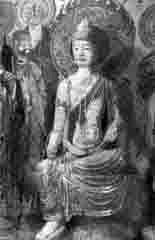 Cave No. 328, High TangThe unification of China under the Tang Dynasty brought with it an unprecedented development of Dunhuang mural art. With the changes in the history of the Hexi corridor, we can divide the murals executed during the three hundred years of the Tang Dynasty into those from the early half and others from the latter half of the dynasty. The early half comprises the initial period of the Tang Dynasty, up to the time when Tibet occupied Hexi. The subsequent period up to the downfall of the dynasty constitutes the latter half.
Cave No. 328, High TangThe unification of China under the Tang Dynasty brought with it an unprecedented development of Dunhuang mural art. With the changes in the history of the Hexi corridor, we can divide the murals executed during the three hundred years of the Tang Dynasty into those from the early half and others from the latter half of the dynasty. The early half comprises the initial period of the Tang Dynasty, up to the time when Tibet occupied Hexi. The subsequent period up to the downfall of the dynasty constitutes the latter half.
This style is distinguished by refined line drawings and simple and light colouring. The figures created are solemn and tranquil with a quality of elegant ease. This is the "shuti" (sparse style) described by Zhang Yanyuan as one with "simple strokes, a light mood and an elegant finish". From the Kaihuang Era (581-600) to the Daye Era (605-617) this style prevailed as a distinct feature of the Sui Dynasty murals.
Related destinations
Why Choose Us?
We are the top Silk Road tour operator based in Dunhuang, China. We focus on providing well designed Silk Road China Tours with resonable price and thoughtful service.
- Easy & carefree booking
- The best value
- Great travel experience
- Locally operated
Hot Tours
-

6 days Gansu tour to Binglingsi, Xiahe and Langmusi
Tour type : Private tour Price : from *** Destinations : Lanzhou - linxia - Xiahe - Langmusi - Hezuo - Lanzhou -

12 Days Gansu Highlights Tour
Tour type : Private tour Price : from *** Destinations : Xian – Tianshui – Lanzhou – Xiahe – Langmusi – Hezuo – Zhangye – Jiayuguan - Dunhuang -
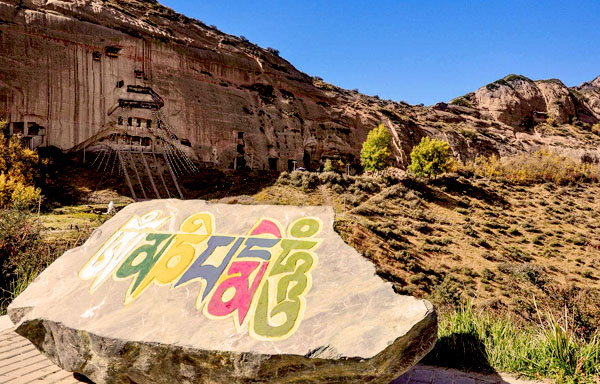
10 Days Silk Road Classic Tour
Tour type : Private tour Price : from *** Destinations : Xian - Zhangye - Jiayuguan - Dunhuang - Turpan - Urumqi -
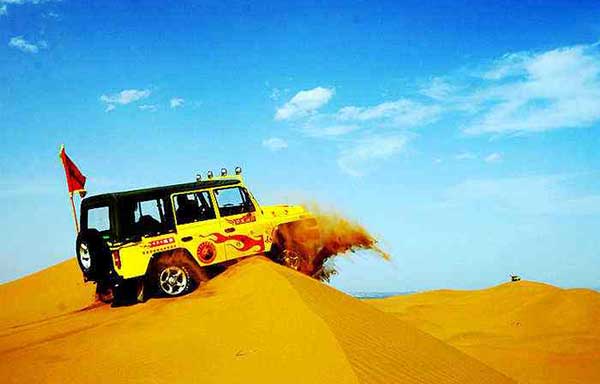
5 Days Zhangye - Alxa youqi Highlights Tour
Tour type : Private Tour Price : from *** Destinations : Zhangye - Alax youqi - Zhangye

